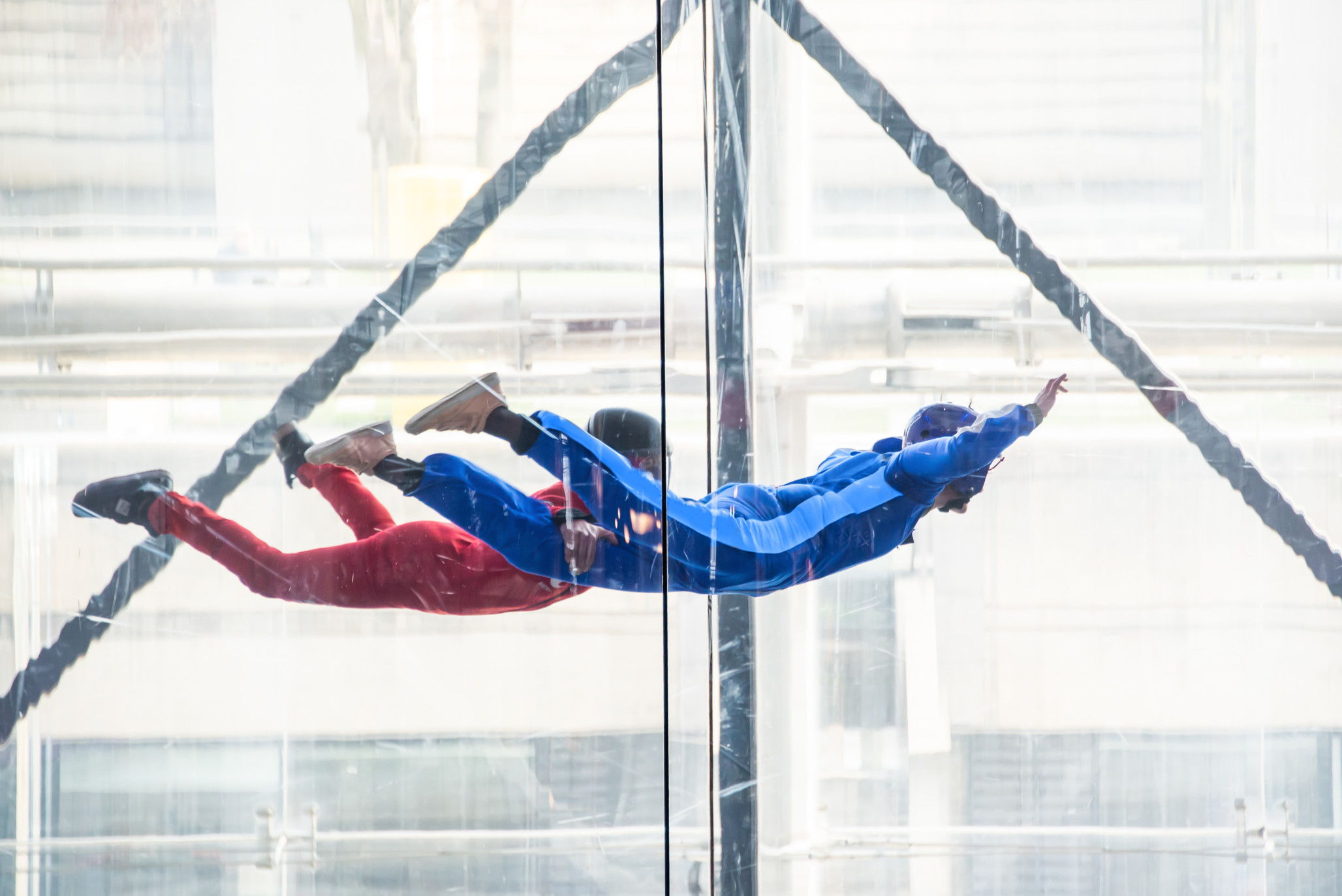
Managing Risk in Indoor Skydiving Operations
Skydiving is quite popular, and millions of jumps occur every year. Many find the sensation of free-falling exhilarating.
However, this extreme sport isn’t for everyone. For those who are afraid of heights but still want to experience the adrenaline rush offered by defying gravity, indoor skydiving is an option. It’s typically much safer than traditional skydiving, but there are a few serious risks involved and accidents are possible.
Those who partake in any kind of skydiving should look into the coverage offered by recreation liability insurance. It may help alleviate some of the burden associated with accidents.
Read on to learn everything you need to know about indoor skydiving and why all who participate in it should pursue liability coverage.
How It Works
Indoor skydiving is made possible by a series of large fans. These fans create a high-speed air column that produces enough force to keep a human suspended.
This mid-air suspension tries to replicate the feeling of free-fall. Those who do it also say it makes them feel weightless.
While some can make it look easy, indoor skydiving has quite the learning curve. The best posture for indoor skydiving involves leaning forward, arching the back, and spreading the arms out wide.
This position keeps the indoor skydiver stable and maximizes the feeling of weightlessness. More experienced indoor skydivers can perform acrobatic tricks.
Expect to spend around 2 minutes in the wind tunnel during a typical indoor skydiving experience. It’s not a lot of time, but it’s definitely enough to get the blood pumping.
Who Can Go Indoor Skydiving
People of almost any age can participate in indoor skydiving. iFly, the most popular indoor skydiving company, allows children as young as 3 years old to join in on the fun. There’s no age maximum so it’s ideal for a day of family fun.
There are a few things that limit who can indoor skydive. The first is weight. 300 pounds is a typical weight limit, and each company has slightly different restrictions. iFly’s limit is 300 pounds.
Another group of people who may want to avoid indoor skydiving is those with recent shoulder and back injuries. The shoulders and back need to be able to support an individual’s weight during the flight.
Those with heart conditions should consult with their doctor before going indoor skydiving. The activity can place strain on the heart.
Pregnant women should also avoid indoor skydiving.
How to Stay Safe
Indoor skydiving is usually safe, and many companies take steps to educate their customers and provide safety gear.
All first-time fliers are subjected to a training session that takes place before the wind tunnel is turned on. They teach how to contort one’s body in the tunnel.
To stay safe during indoor skydiving activities, individuals need to wear a jumpsuit, a helmet, eye protection, and ear plugs. Most companies include this safety gear for no additional cost.
Skydiving companies also rely on people to self-report health conditions that may make them poor candidates for an indoor skydiving experience.
Both patrons and companies can protect themselves by adhering to safety rules, wearing the appropriate gear, and by avoiding the activity if a medical condition makes it dangerous.
Traditional Skydiving Vs. Indoor Skydiving
The aim of indoor skydiving is to create the same feelings as traditional skydiving without the need to leap out of an airplane. Many agree that it’s successful in doing so.
Wind Tunnel Vs. Airplane
This is the obvious difference between the two sports. Taking place in a wind tunnel allows indoor skydiving to be a year-round all-weather activity.
Temperature and weather conditions make traditional skydiving impossible at certain times.
Weightlessness
While the means of achieving it couldn’t be more different, both forms of skydiving induce a feeling of weightlessness. It’s the sensation that all who pursue this sport are chasing.
Time
Traditional skydiving requires an investment of a few hours, but most of that time is spent preparing and riding up to the appropriate altitude in the airplane. The freefall portion usually only lasts for around a minute.
Indoor skydiving induces the feeling of freefall for at least two minutes and requires significantly less set-up than traditional skydiving.
Body Control
The way skydivers and indoor skydivers use their bodies is very similar. Both sports use the same form and the same muscles. Those that are already proficient at traditional skydiving find their skills transfer easily.
In fact, the body control aspects are so similar indoor skydiving can be used as a training tool for outdoor skydiving.
Danger
Traditional skydiving is dangerous. Many people aren’t eligible and those that partake in the activity seek insurance solutions to protect themselves should legal action be necessary.
If you wish to try indoor skydiving, it’s wise to cover yourself with a similar policy.
Risks Associated With Indoor Skydiving
Indoor skydiving is usually a very safe activity. The vast majority of individuals who attempt it have a pleasurable experience.
There are still a few chances for injury. Some people struggle to move around in the wind tunnel and may collide with the walls. This typically results in minor bruises.
In 2018, iFly served over 1.2 million customers and claimed that only 287 of them sustained injuries. However, some of these injuries were quite severe.
One individual reported losing a piece of their nose in a collision and many others have reported sustaining dislocated shoulders.
While the available data suggests that indoor skydiving is quite safe, the chance to sustain a major injury still exists.
It’s not clear whether the individual or the skydiving business ultimately caused these injuries, but it should be noted that one is forced to sign a safety waiver before entering the wind tunnel.
Seeking legal recourse in the event of an accident could be costly in this instance, but insurance may help cover the expenses.
Indoor Skydiving Insurance Solutions
Insurance for indoor skydiving businesses is a necessity. You never know what could go wrong when it comes to the forces at play within the wind tunnel. Individuals should explore their coverage options as well.
Click to learn more about our skydiving insurance solutions and to start the quote process. You can also reach out to us by calling 877-585-2853 or emailing us at info@xinsurance.com.

Rick J. Lindsey hails from Salt Lake City, Utah. He began working in the mailroom of his father’s Salt Lake City insurance firm, getting his introduction to the business that became his lifelong career. Rick J. Lindsey quickly rose through the ranks while working in nearly every imaginable insurance industry job. As an entrepreneur, specialty lines underwriter, claims specialist, risk manager, and a licensed surplus lines broker, Rick J. Lindsey is highly skilled in all levels of leadership and execution. As he progressed on his career path, Rick J. Lindsey discovered an urgent need for insurers willing to write policies for high-risk individuals and businesses. He was frequently frustrated that he could not provide the liability protection these entities desperately needed to safeguard their assets. He also formed the belief that insurance companies acted too quickly to settle frivolous claims. Rick J. Lindsey decided to try a different approach. He started an insurance company and became the newly formed entity’s CEO. This opportunity has enabled Rick J. Lindsey to fill a void in the market and provide a valuable service to businesses, individuals, and insurance agents who write high-risk business. XINSURANCE also specializes in helping individuals and businesses who live a lifestyle or participate in activities that make them difficult for traditional carriers to insure. If you’ve been denied, non-renewed, or canceled coverage, don’t give up quite yet. Chances are XINSURANCE can help.

